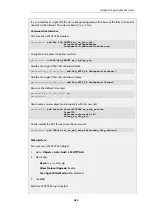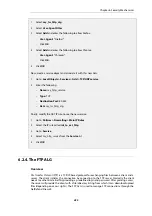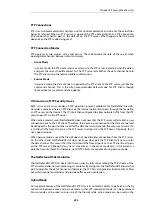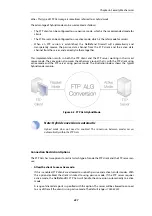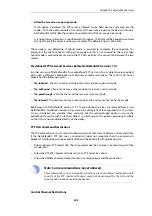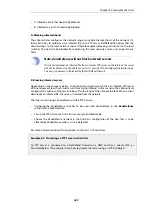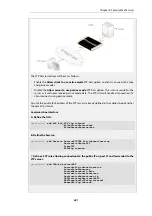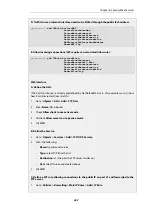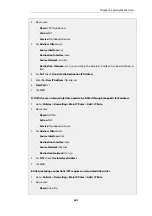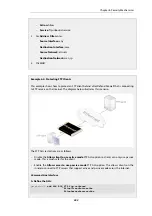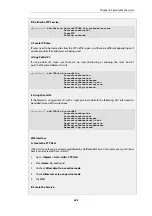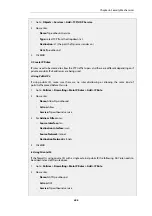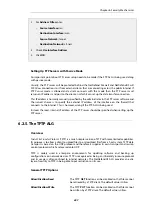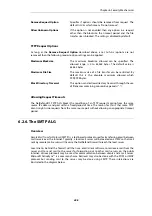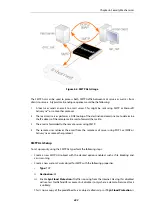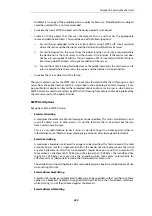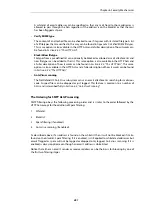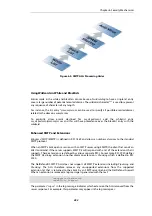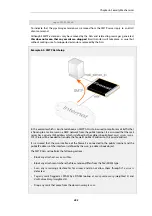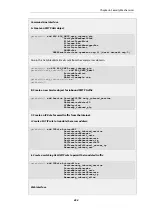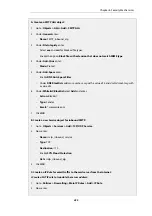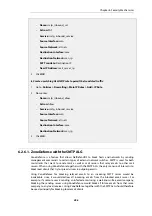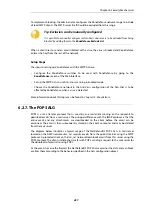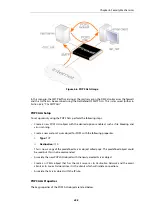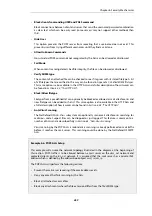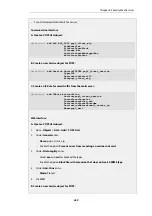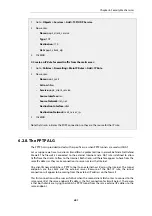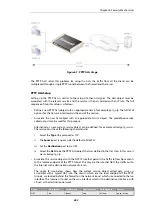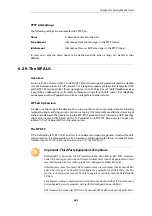
Remove Request Option
Specifies if options should be removed from request. The
default is
False
which means "do not remove".
Allow Unknown Options
If this option is not enabled then any option in a request
other than the blocksize, the timeout period and the file
transfer size is blocked. The setting is disabled by default.
TFTP Request Options
As long as the Remove Request Option described above is set to
false
(options are not
removed) then the following request option settings can be applied:
Maximum Blocksize
The maximum blocksize allowed can be specified. The
allowed range is 0 to 65,464 bytes. The default value is
65,464 bytes.
Maximum File Size
The maximum size of a file transfer can be restricted. By
default this is the absolute maximum allowed which
999,999 Kbytes.
Block Directory Traversal
This option can disallow directory traversal through the use
of filenames containing consecutive periods ("..").
Allowing Request Timeouts
The NetDefendOS TFTP ALG blocks the repetition of an TFTP request coming from the same
source IP address and port within a fixed period of time. The reason for this is that some TFTP
clients might issue requests from the same source port without allowing an appropriate timeout
period.
6.2.6. The SMTP ALG
Overview
Simple Mail Transfer Protocol
(SMTP) is a text based protocol used for transferring email between
mail servers over the Internet. Typically, a local mail server will be located on a DMZ so that mail
sent by remote mail servers will traverse the NetDefend Firewall to reach the local server.
Local clients behind the firewall will then use email client software to retrieve email from the
server and to send mail to the server for forwarding out to other mail servers on the public
Internet. Various protocols may be used for communication between clients and a mail server.
Microsoft ActiveSync™ is a common choice. Retrieval may also be done with the POP3 or IMAP
protocol but sending mail to the server may be done using SMTP. These interactions are
illustrated in the diagram below.
Chapter 6: Security Mechanisms
448
Summary of Contents for NetDefendOS
Page 30: ...Figure 1 3 Packet Flow Schematic Part III Chapter 1 NetDefendOS Overview 30 ...
Page 32: ...Chapter 1 NetDefendOS Overview 32 ...
Page 144: ...Chapter 2 Management and Maintenance 144 ...
Page 284: ...Chapter 3 Fundamentals 284 ...
Page 392: ...Chapter 4 Routing 392 ...
Page 419: ... Host 2001 DB8 1 MAC 00 90 12 13 14 15 5 Click OK Chapter 5 DHCP Services 419 ...
Page 420: ...Chapter 5 DHCP Services 420 ...
Page 573: ...Chapter 6 Security Mechanisms 573 ...
Page 607: ...Chapter 7 Address Translation 607 ...
Page 666: ...Chapter 8 User Authentication 666 ...
Page 775: ...Chapter 9 VPN 775 ...
Page 819: ...Chapter 10 Traffic Management 819 ...
Page 842: ...Chapter 11 High Availability 842 ...
Page 866: ...Default Enabled Chapter 13 Advanced Settings 866 ...
Page 879: ...Chapter 13 Advanced Settings 879 ...

